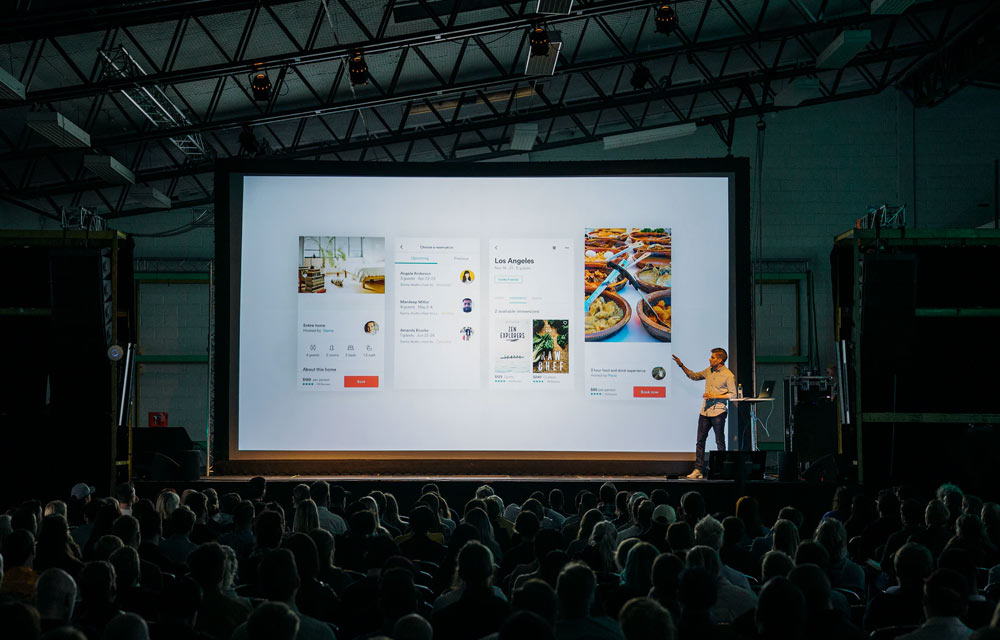Do you want to organise an event to highlight your company’s services or products without committing to renting a room, booking service providers, etc.? Organising a virtual professional event can bring you a number of advantages at a lower cost. For organisers, creating a webinar represents an excellent way of getting in touch with potential customers in a non-commercial way. Follow these 10 tips to discover how to organise and plan your first webinar today!
Summary
- Why set up a webinar?
- Select a videoconference platform
- Manage registrations for the webinar
- Promote your webinar
- Send out the link to your webinar
- Choose the subject of the webinar
- Find the right format for your webinar
- Create the content of your talk
- Analyse your customer data
- Keep in touch after the webinar
1. Why set up a webinar?
Webinars are generally more practical for your attendees than face-to-face events, as there is no need for them to leave their office to attend them. Furthermore, they still have the opportunity to get involved and ask questions. They might even feel more confident in doing so, without needing to raise their hand and speak into a microphone in front of an entire audience. As long as you can easily run your online talk and provide practical advice to your audience, organising a webinar may well be the right option for you.
2. Select a videoconference platform
There are numerous webinar and videoconference platforms on the market, including some that are more or less free, such as Zoom, YouTube, Skype, Google Meets and Google Hangouts. There are several factors to take into account when making your choice:
- Maximum number of attendees
- Option of switching easily from one speaker to another
- Question-and-answer options
- Screen sharing and slides
- Audio and video recording
- Cost of the solution and of its features
3. Manage registrations for the webinar
Choosing a registration tool is just as important as choosing the videoconference platform. It’s through the latter that you’ll be able to sell access to your webinar. With Weezevent, you can easily set up registrations with fees for a webinar — you can even activate a pay-what-you-want option, as well as a free option.
Create an event in just a few clicks in order to set up online registrations for your webinar on your own site or on a dedicated mini-site. Your attendees will benefit from a smooth customer experience within a secure booking solution. Gather key information on your audience at the time of registration in order to better understand them and improve your future events.
4. Promote your webinar
Integrate your registration module into your Facebook page or event in order to easily manage bookings for your webinar. At the same time, if you’ve already organised online events or talks, your database of email addresses can be synced within our emailing and CRM solution.
When you communicate around your webinar, clearly demonstrate how each attendee will leave with the skills they’re looking for. It’s important that they don’t simply think you’re going to sell them something. Mention that they will have the chance to find answers to the important questions they ask themselves on a daily basis.
For free events, estimate the non-attendance rate at 50%. You can therefore target a number of registrations that’s higher than what you really expect. If the content of your webinar is useful enough for a certain audience, there’s no reason why you shouldn’t charge for attendance. Selling access to your webinar, even if it’s just a symbolic sum, will help you find a more serious, engaged audience. Create and structure your prices as you see fit with Weezevent’s intuitive features.
5. Send out the link to your webinar
With Weezevent, all attendees receive a confirmation email containing legal information, including the organiser’s email and address, event date, etc. Reassure and guide them by integrating the link to your event on the webinar platform. Do your utmost to ensure that as many people as possible attend the event on the day.
With our emailing and marketing solution, remind all those who have registered of the steps to follow to access your webinar. Do this between 24 hours and 1 hour before the event.
6. Choose the subject of the webinar
The tricky part in choosing the subject for your webinar is finding a specific area of focus that will be of enough interest to your target customers. You will have a good idea of the most relevant topics by analysing the questions that you receive most often. What do customers want to know more about? What skills do they need to achieve their goals? What expertise can you pass on to them? If you already have a community, you can even provide them with a quick questionnaire in order to stack the odds in your favour when choosing the subject for your webinar.
7. Find the right format for your webinar
There are different formats to consider when you’re organising a webinar. You should study them according to your objectives and your confidence as an online seminar presenter. Would you prefer to offer a highly interactive experience to a small group, or give a conference with a long speech to a larger audience? Do you want to run your webinar alone or call on expert speakers?
If several people speak, it’s useful to have a moderator to direct debates and filter attendees’ questions. Having another person to manage the technical aspects of the webinar while you’re speaking can also help you concentrate on the task at hand.
8. Create the content of your talk
Your attendees will need material in order to learn and stay focused throughout your webinar. Write a list of subjects to address, but a successful webinar will above all contain attractive visual aids. During a webinar, your attendees’ attention can quickly be distracted from your content when all they can see is a stationary person speaking — especially since you can’t necessarily see them.
To avoid this, prepare attractive animated material to bring your speech to life, with images, graphics, tables and figures. You can also carry out live demonstrations or present products to ensure your webinar remains visually interesting.
Plan the duration of each part of your webinar as well as its overall duration. Keep an eye on your watch so that you don’t get carried away, and set time aside to answer attendees’ questions.
9. Analyse your customer data
Review the list of attendees in your webinar software program and monitor your online attendees via your WeezAccess dashboard in order to see who has really participated. You also have each attendee’s contact details and all other information requested at the time of registration — surname, first name, position, company, etc. This is a real goldmine that you can use to create and refine a database of prospects.
10. Keep in touch after the webinar
Depending on the number of attendees for your webinar, try to monitor each of them personally. For instance, ask them if they have any further questions some days after having ‘digested’ the webinar’s content. For those who registered but didn’t attend, say that you are sorry they couldn’t make it, explain to them what they missed, and give them the opportunity to view a recording of the webinar — or attend a future session.
You could also consider thanking attendees for their attendance by sending them a special offer or exclusive discount, which will further increase your chances of conversion. With WeezTarget, you can also monitor the turnover and number of tickets sold after an email or publication campaign on social networks.
With all our tips and a last push of organisation, your future webinar is ready to be launched. To manage your online registrations, your attendee monitoring and your marketing, discover all of our solutions’ features by clicking on the button below:




